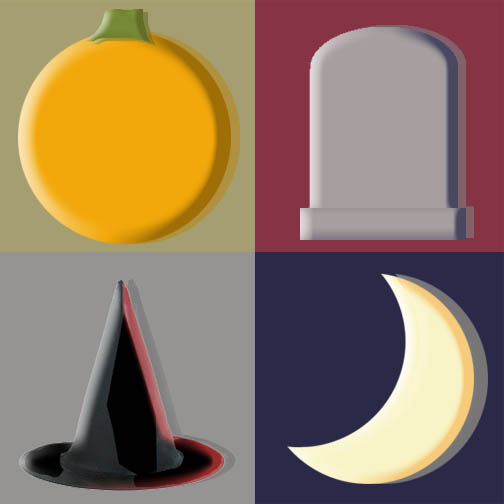
Collages
NEXT
>>
Click Image
Halloween
Soul Cakes
Computer drawing
© Pat
Power
October 2002
The custom of Halloween was brought to America in the 1840's by Irish immigrants fleeing their country's potato famine. At that time, the favorite pranks in New England included tipping over outhouses and unhinging fence gates.
The
custom of trick-or-treating is thought to have originated not with the
Irish Celts, but with a ninth-century European custom called souling.
On November 2, All Souls Day, early Christians would walk from village
to village begging for "soul cakes," made out of square
pieces of bread with currants. The more soul cakes the beggars would receive,
the more prayers they would promise to say on behalf of the dead relatives
of the donors. At the time, it was believed that the dead remained in
limbo for a time after death, and that prayer, even by strangers, could
expedite a soul's passage to heaven.
The Jack-o-lantern custom probably comes from Irish folklore. As the tale
is told, a man named Jack, who was notorious as a drunkard and trickster,
tricked Satan into climbing a tree. Jack then carved an image of a cross
in the tree's trunk, trapping the devil up the tree. Jack made a deal
with the devil that, if he would never tempt him again, he would promise
to let him down the tree.
According to the folk tale, after Jack died, he was denied entrance to
Heaven because of his evil ways, but he was also denied access to Hell
because he had tricked the devil. Instead, the devil gave him a single
ember to light his way through the frigid darkness. The ember was placed
inside a hollowed-out turnip to keep it glowing longer.
The Irish used turnips as their "Jack's lanterns" originally.
But when the immigrants came to America, they found that pumpkins were
far more plentiful than turnips. So the Jack-O-Lantern in America was
a hollowed-out pumpkin, lit with an ember.
So, although some pagan groups, cults, and Satanists may have adopted
Halloween as their favorite "holiday," the day itself did not
grow out of evil practices. It grew out of the rituals of Celts celebrating
a new year, and out of Medieval prayer rituals of Europeans.